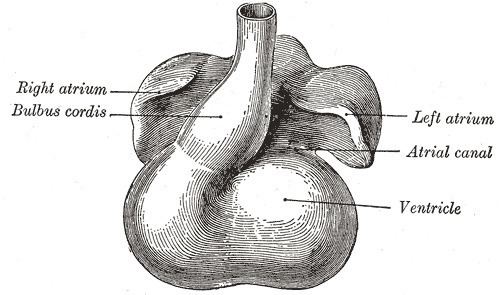Carnegie stage 9 Dorlands/Elsevier b_26/12200235 | Latin Bulbus cordis | |
 | ||
Gives rise to smooth parts of right ventricle, left ventricle | ||
The bulbus cordis (the bulb of the heart) lies ventral to the primitive ventricle after the developing heart assumes its S-shaped form. Together, the bulbus cordis and the primitive ventricle give rise to the ventricles of the formed heart. The superior end of the bulbus cordis is also called the conotruncus.
The adjacent walls of the bulbus cordis and ventricle approximate, fuse, and finally disappear, and the bulbus cordis now communicates freely with the right ventricle, while the junction of the bulbus with the truncus arteriosus is brought directly ventral to and applied to the atrial canal.
By the upgrowth of the ventricular septum the bulbus cordis is in great measure separated from the left ventricle, but remains an integral part of the right ventricle, of which it forms the infundibulum.
